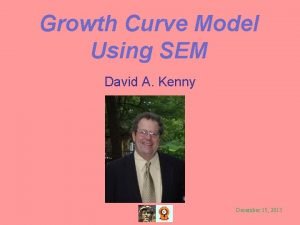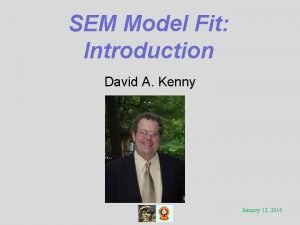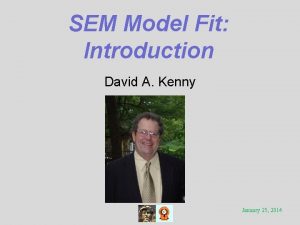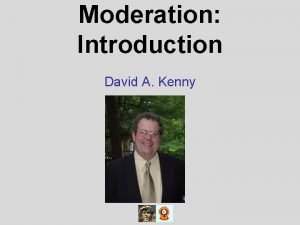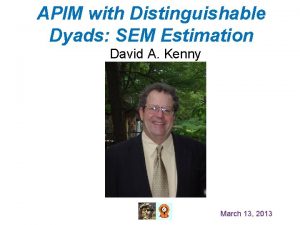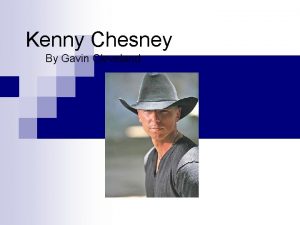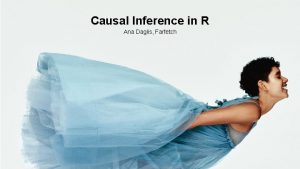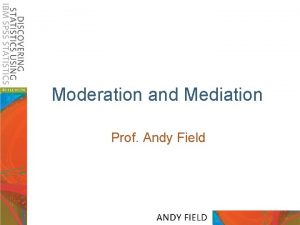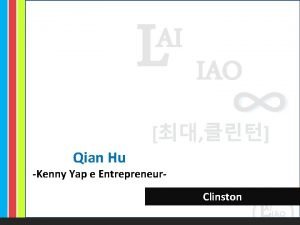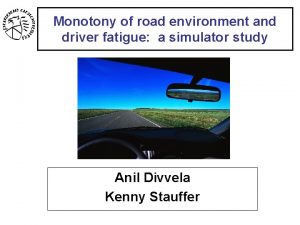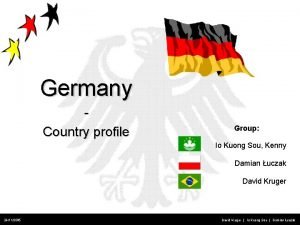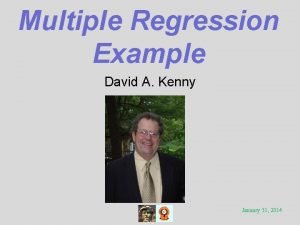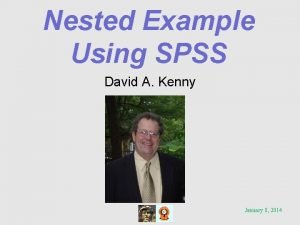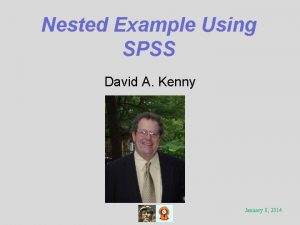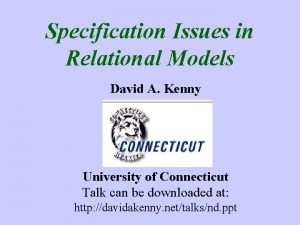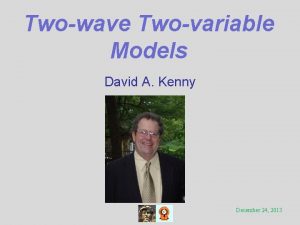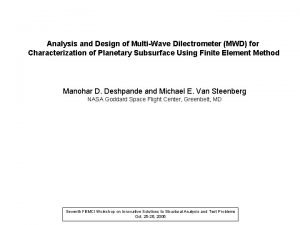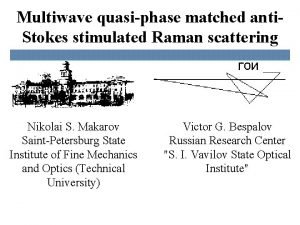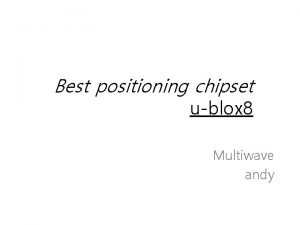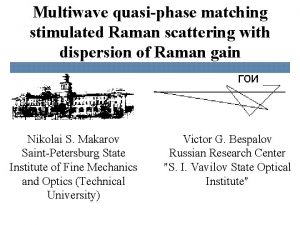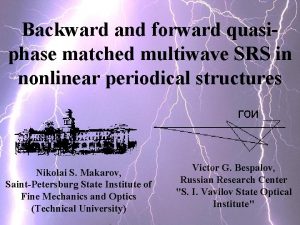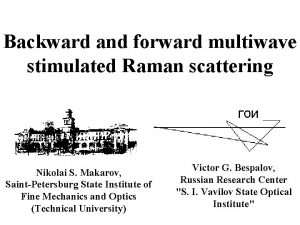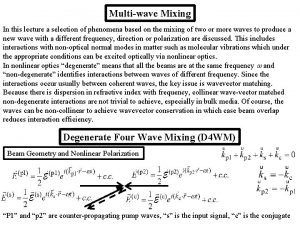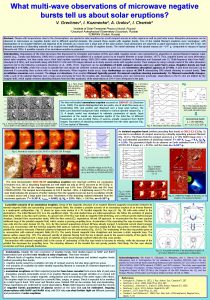Example Models for Multiwave Data David A Kenny





















- Slides: 21

Example Models for Multi-wave Data David A. Kenny December 15, 2013

Example Data Dumenci, L. , & Windle, M. (1996). Multivariate Behavioral Research, 313 -330. Depression with four indicators (CESD) PA: Positive Affect (lack thereof) DA: Depressive Affect SO: Somatic Symptoms IN: Interpersonal Issues Four times separated by 6 months 433 adolescent females Age 16. 2 at wave 1 2

Models • Models – Trait – Autoregressive – Latent Growth Curve – STARTS – Trait-State-Occasion (TSO) • Types – Univariate – DA measure (except TSO) – Latent Variable 3

Latent Variable Measurement Models • Unconstrained – c 2(74) = 107. 72, p =. 006 – RMSEA = 0. 032; TLI =. 986 • Equal Loadings – c 2(83) = 123. 66, p =. 003 – RMSEA = 0. 034; TLI =. 985 • The equal loading model has reasonable fit. • All subsequent latent variable models (except growth curve) are compared to this model. 4

Trait Model: Univariate • Test of Equal Loadings? No • Model Fit: RMSEA = 0. 071; TLI =. 974 5

Trait Model: Latent Variables • c 2(88) = 156. 21, p <. 001; RMSEA = 0. 042; TLI =. 983 • More Trait than State Variance • Trait Variance: 12. 78 • State Variances: 8. 17 to 12. 48 6

Autoregressive Model: Univariate • Fixed error variances equal. • Good fitting model: c 2(2) = 4. 98, p =. 083; RMSEA = 0. 059; TLI =. 982 Reliabilities Stabilities 1: . 657 1 2: . 802 2: . 650 2 3: . 847 3: . 597 3 4: . 738 4: . 568 7

Autoregressive Model: Latent Variables • Not a very good fitting model compared to the CFA – c 2(3) = 60. 08, p <. 001 • Overall Fit: c 2(86) = 183. 74, p <. 001 • RMSEA = 0. 051; TLI =. 966 • Standardized Stabilities 1 2: . 636 2 3: . 659 8 3 4: . 554

Growth Curve Models • Unlike other models it fits the means and so results are directly comparable to other models. • Scaling of Time: -0. 75, -0. 25, & 0. 75; Time 0 is the midpoint of the study. • Null model of zero correlations and equal means. 9

Growth Curve Model: Univariate • Test of equal error variances: c 2(3) = 0. 60, p =. 896 • Equal variance assumed • Fit: c 2(8) = 16. 46, p =. 036; RMSEA = 0. 049; TLI =. 981 10

Growth Curve Model: Univariate: Results Slope-Intercept r = -. 287 Intercept Slope Error Mean Variance 5. 407 12. 491 -0. 879 4. 001 0. 000 11. 472 11

Growth Curve Model: Latent Variables Fit of CFA with Latent Means c 2(92) = 157. 93, p <. 821, RMSEA = 0. 041; TLI =. 977 Test of Equal Latent Error Variances in the LGC c 2(3) = 0. 92, p =. 821 Equal Error Variance assumed. 12

Growth Curve Model: Latent Variables Fit: c 2(100) = 170. 84, p <. 001, RMSEA = 0. 040; TLI =. 984 Slope-Intercept r = -. 297 Mean Variance Intercept 5. 404 13. 307 Slope -0. 847 3. 934 Error 0. 000 8. 913 13

Trait State Occasion Model • Standard TSO does not have correlated errors, but they are added. • Fit: c 2(90) = 153. 92, p <. 001; RMSEA = 0. 040; TLI =. 979 • Variances: Trait 11. 139 & State 11. 788 • Autoregressive coefficient =. 198 14

STARTS Univariate • Difficulty in finding trait factor. None of the models converged. • Trait factor as Seasonality: Loadings in the Fall are 1 and in the Spring are -1 • Models converged. • Data appear to be stationary, no changes in variance 15

Univariate STARTS Results • Fit: c 2(89) = 15. 44, p =. 009, RMSEA = 0. 069; TLI =. 975 • Variances – Seasonality 0. 79 (p =. 003) – ART 17. 32 (p <. 001) – State 4. 93 (p <. 001) • AR coefficient: . 826, r 14 =. 8263 =. 563 16

Latent Variable STARTS • Fit: c 2(89) = 136. 86, p <. 001, RMSEA = 0. 035; TLI =. 984 • Variances – Seasonality 0. 79 (p =. 003) – ART 17. 32 (p <. 001) – State 4. 93 (p <. 001) • AR coefficient: . 826, r 14 =. 8263 =. 563 17

TSO vs. STARTS • Trait factor in TSO becomes the ART factor in STARTS • The State factor with a low AR coefficient in TSO becomes the State factor in STARTS with a zero coefficient • STARTS also has a Seasonality Factor. 18

Summary of Fit: Univariate RMSEA Trait 0. 071 Autoregressive 0. 059 Growth Curvea 0. 049 STARTS 0. 069 a. Growth TLI. 974. 982. 981. 975 Curve Model also explains the means. 19

Summary of Fit: Latent Variables RMSEA No Model 0. 034 No Model (LGC) 0. 041 Trait 0. 042 Autoregressive 0. 051 Growth Curve 0. 040 TSO 0. 040 STARTS 0. 035 TLI. 985. 979. 983. 966. 984. 979. 984 20

Best Model? • While debatable, it would appear that the Latent Growth Curve Model is the most sensible model to retain. • The Latent STARTS model has a good fit, but the absence of a Trait factor and the post hoc Seasonal factor make it less than desirable. 21
 David kenny mediation
David kenny mediation David kenny sem
David kenny sem David kenny sem
David kenny sem Sem model fit
Sem model fit Moderation assumptions
Moderation assumptions Apim sem
Apim sem Difference between modals and semi modals
Difference between modals and semi modals The tannery liverpool
The tannery liverpool The watsons go to birmingham kenny
The watsons go to birmingham kenny Kenny rogers the gambler meaning
Kenny rogers the gambler meaning Make a prediction about kenny and franchesca
Make a prediction about kenny and franchesca Kenny carter coach
Kenny carter coach Kenny chesney cleveland
Kenny chesney cleveland Farfetch scandal
Farfetch scandal Andy field moderation
Andy field moderation Qian hu kenny yap
Qian hu kenny yap Kenny clamp
Kenny clamp Kenny g louis armstrong
Kenny g louis armstrong Kenny colson
Kenny colson Kenny holmes the voice
Kenny holmes the voice Monotony of the road
Monotony of the road Kenny sou
Kenny sou

